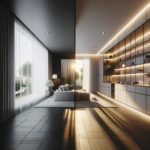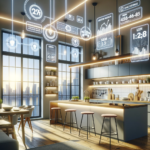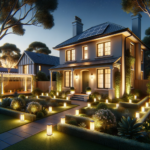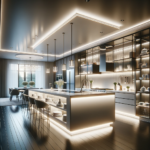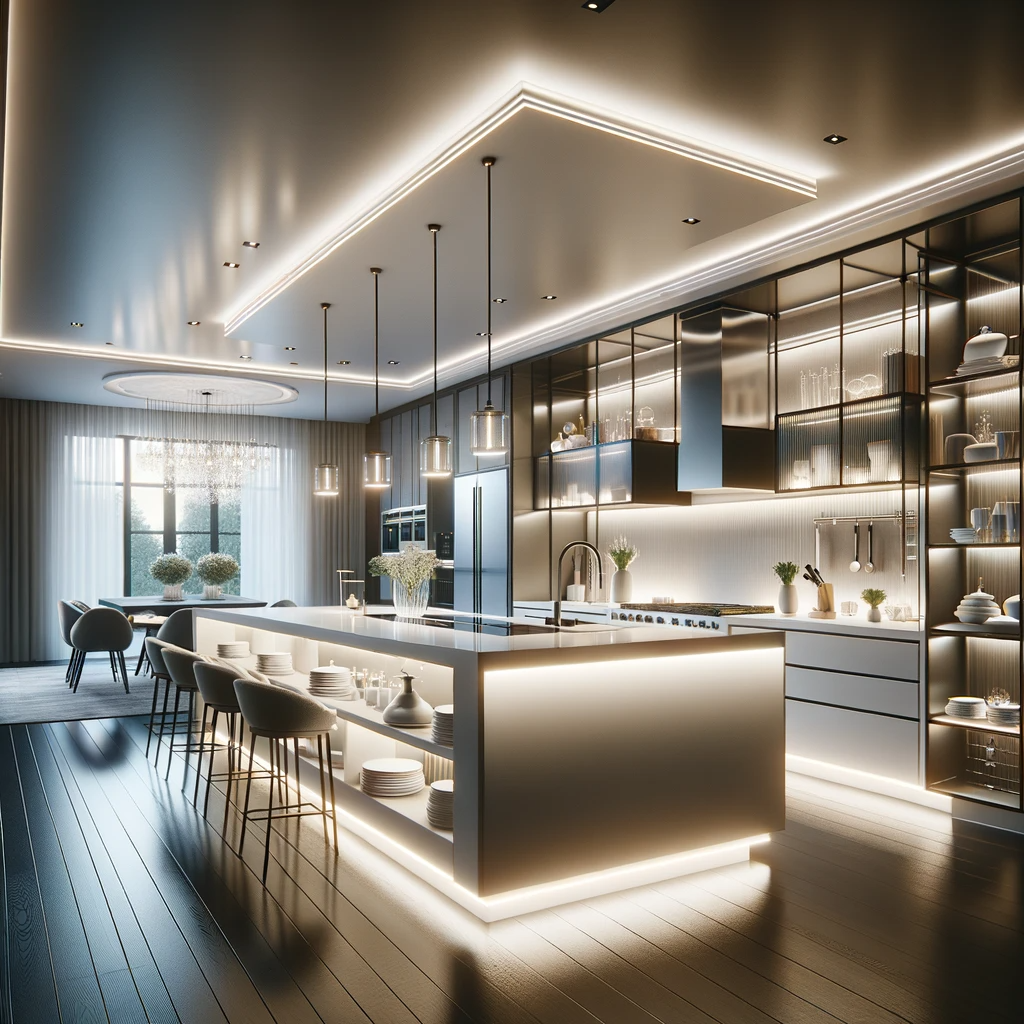Introduction
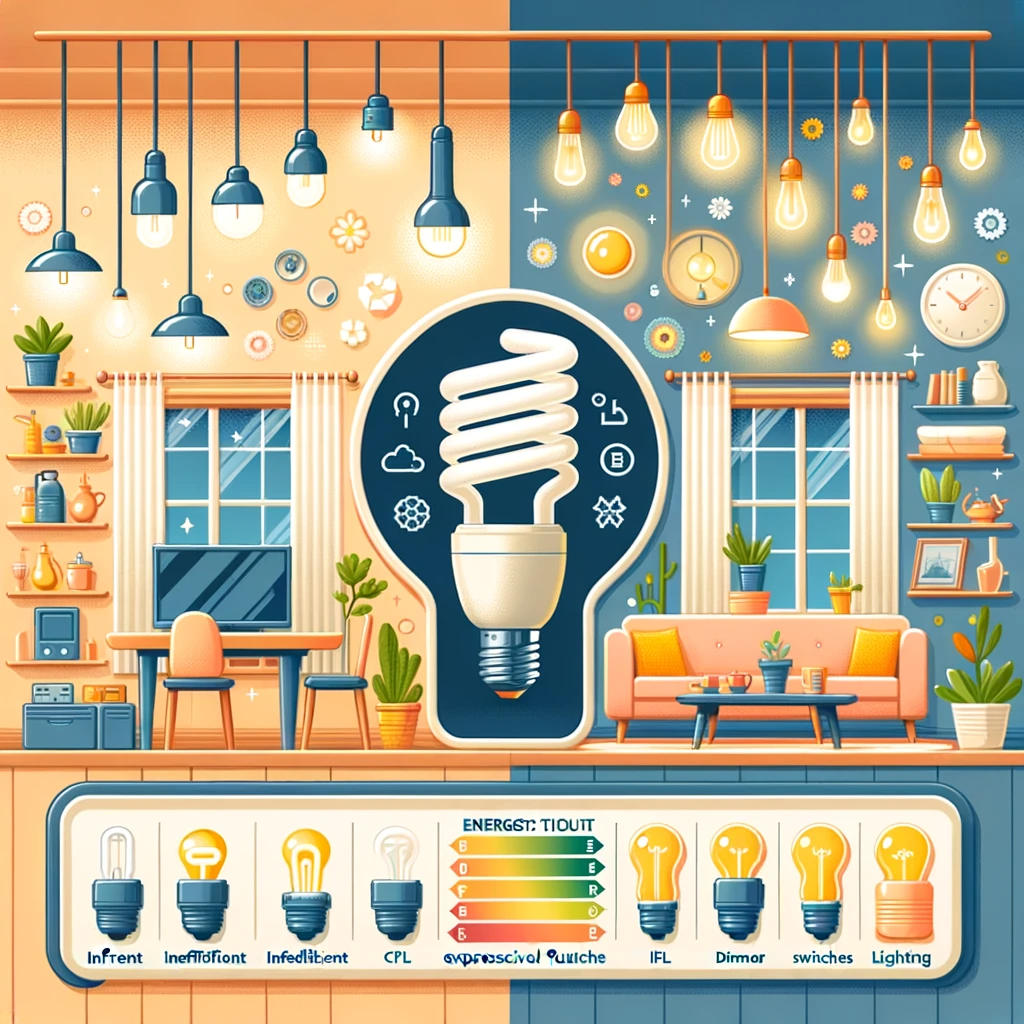
The Power of Energy-Saving Practices
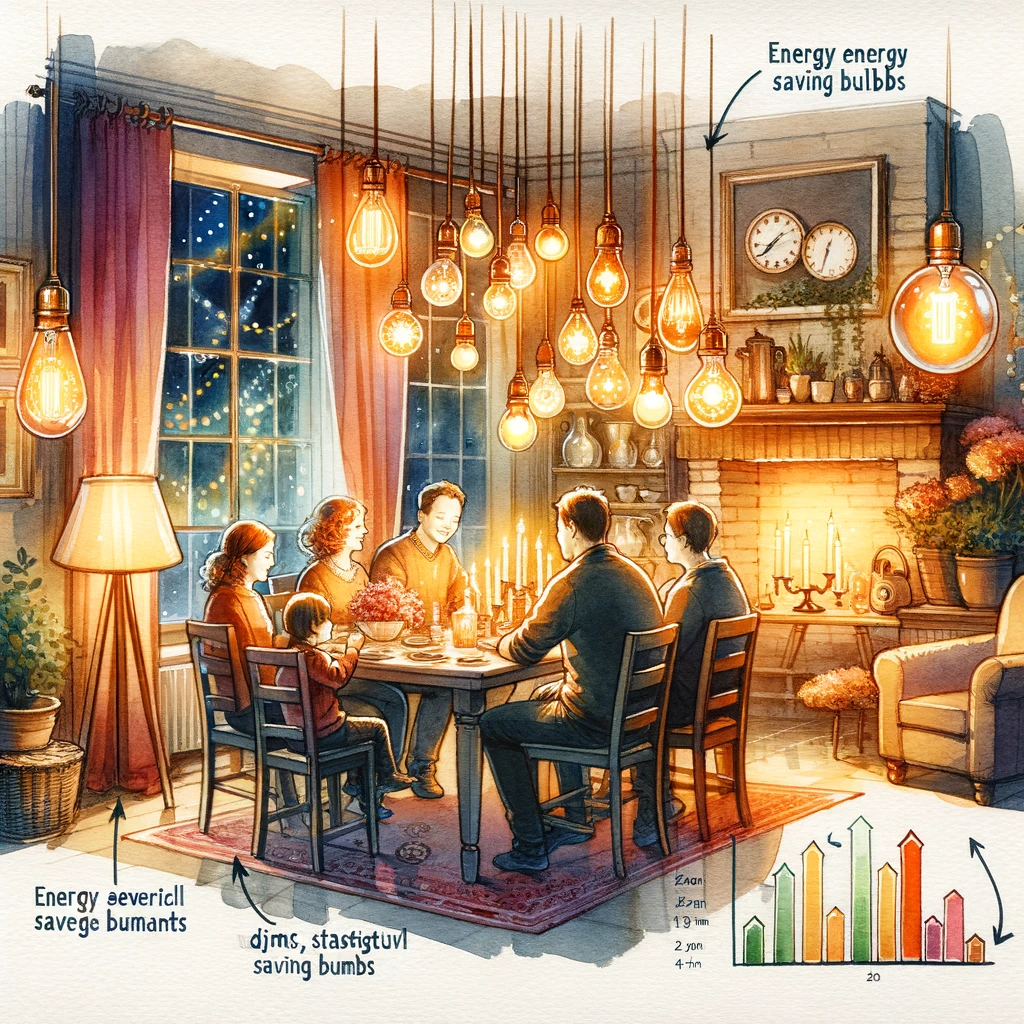
Energy-saving practices play a crucial role in mitigating the environmental impact of our daily activities. By adopting energy-efficient habits, we can significantly reduce our carbon footprint and contribute to a more sustainable future. One area where energy-saving practices are particularly impactful is indoor lighting.
The Impact of Indoor Lighting on Energy Consumption
Indoor lighting constitutes a significant portion of household energy consumption. Traditional incandescent bulbs, for example, are highly inefficient and convert a large portion of energy into heat rather than light. This inefficiency translates into higher energy usage and increased electricity bills.
However, by understanding the different types of indoor lighting options available and implementing smart strategies for their usage, we can effectively reduce energy consumption without compromising on illumination quality. Switching to more efficient lighting options like compact fluorescent lamps (CFLs) or light-emitting diodes (LEDs) is an essential step towards achieving energy savings.
CFLs use about 75% less energy than incandescent bulbs while producing the same amount of light. LEDs, on the other hand, are even more efficient than CFLs as they use only about 20-25% of the energy consumed by incandescent bulbs.
These modern alternatives not only save electricity but also have longer lifespans, reducing the frequency at which bulbs need to be replaced. By making the switch to these technologies, households can significantly reduce their overall energy consumption related to indoor lighting.
Different types of indoor lighting: incandescent, fluorescent, LED
Incandescent bulbs emit light by heating a filament wire until it glows. These bulbs are commonly used but are highly inefficient as they convert a significant amount of energy into heat rather than light. Moreover, their lifespan is relatively short compared to other options.
Fluorescent lighting utilizes a different mechanism where an electric current passes through mercury vapor, creating ultraviolet light. This then interacts with a phosphor coating inside the bulb to produce visible light.
Fluorescent bulbs tend to be more energy-efficient and have longer lifespans than incandescent ones. LED (Light Emitting Diode) lighting is the most energy-efficient option available in indoor lighting today.
LEDs work by passing an electrical current through a semiconductor material, causing electrons within the material to release photons of light. They consume significantly less energy than both incandescent and fluorescent bulbs while offering a much longer lifespan.
Comparison of energy efficiency among various lighting options
When comparing the energy efficiency of different indoor lighting options, it is crucial to consider luminous efficacy, which measures how effectively each bulb converts electrical power into visible light. Incandescent bulbs typically have low efficacy ratings, ranging from 10-17 lumens per watt (lm/W).
In contrast, fluorescent bulbs have higher efficacy ratings ranging from 50-100 lm/W depending on the specific type. However, LED lights far surpass both incandescent and fluorescent options in terms of energy efficiency.
The most efficient LEDs can achieve luminous efficacies above 150 lm/W and sometimes even exceed 200 lm/W. This means that LEDs produce more light for less electricity consumed compared to traditional incandescent or fluorescent alternatives.
In addition to their high energy efficiency, LED lights also offer other advantages such as instant full brightness without warm-up time or flickering and the ability to dim smoothly. These factors contribute to their growing popularity as the go-to choice for energy-conscious indoor lighting solutions.
General Practices
Utilize natural light through strategic placement of windows and skylights. Make the most of daylight hours by adjusting daily routines and activities accordingly.
Embrace the Power of Natural Light
Strategically placing windows and skylights in your home allows for ample natural light to enter, reducing the need for artificial lighting during the day. Consider positioning windows in rooms where you spend the most time, such as living areas or home offices.
Additionally, installing skylights can bring beautiful natural light into spaces like kitchens or bathrooms. By harnessing sunlight effectively, you can significantly reduce energy consumption and create a bright, inviting atmosphere.
Adapting your daily routines to align with daylight hours is another effective way to save energy. Maximize natural light by scheduling activities that require good illumination during daytime hours.
For example, plan indoor workouts or hobbies that require adequate lighting for when sunlight is abundant. This approach not only helps you save on energy bills but also promotes a healthier connection with nature and creates a more sustainable lifestyle overall.
Choosing the Right Bulbs
Transition from traditional incandescent bulbs to energy-efficient options like CFLs or LEDs. Understand lumens, wattage, and color temperature for selecting appropriate bulbs.
Shedding Light on Energy-Efficient Bulbs
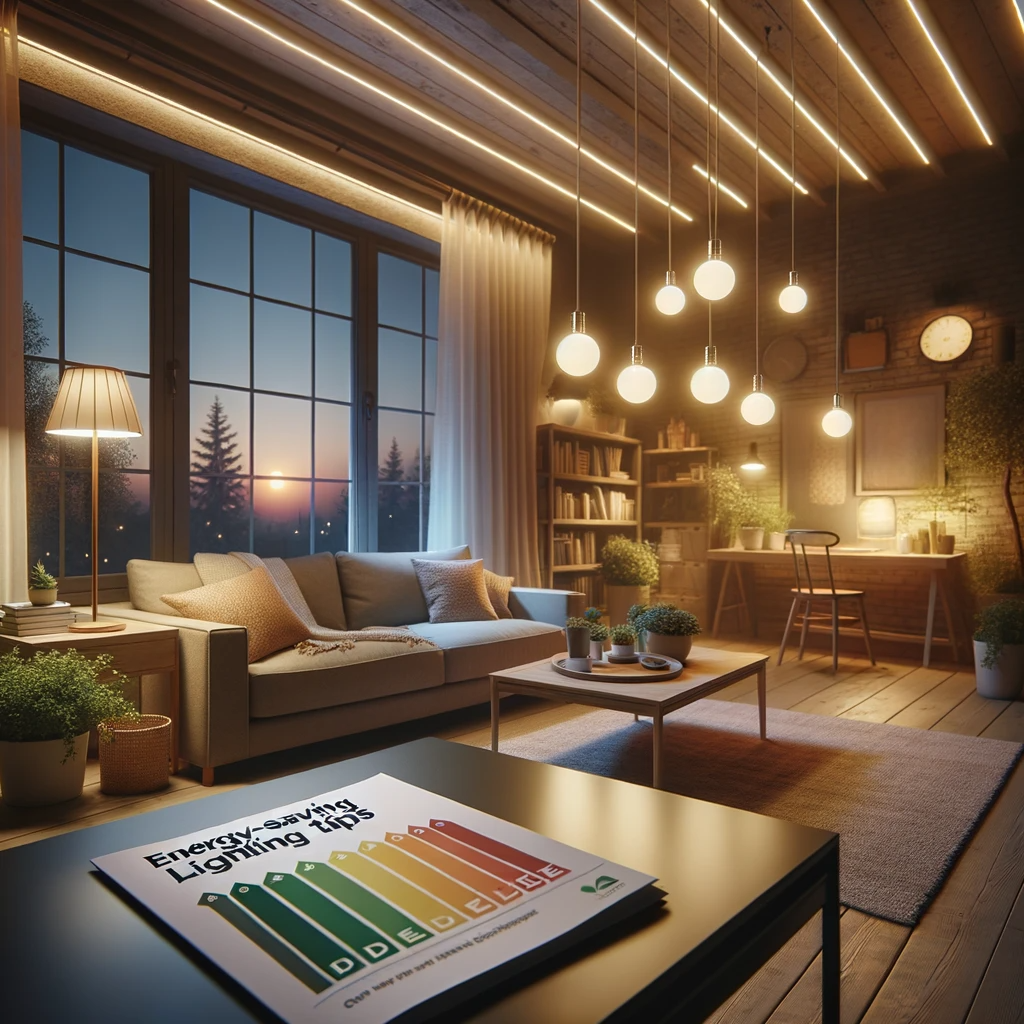
It’s time to bid farewell to traditional incandescent bulbs and make the switch to more efficient alternatives like compact fluorescent lamps (CFLs) or light-emitting diodes (LEDs). CFLs use around 75% less energy than incandescent bulbs while providing comparable brightness.
LEDs are even more efficient than CFLs, consuming up to 80% less energy while lasting significantly longer. When selecting bulbs, it’s crucial to understand lumens (brightness), wattage (energy consumption), and color temperature (warmth or coolness of the light).
Opt for bulbs with lower wattage and higher lumens to achieve the desired brightness without excessive energy usage. Consider the color temperature based on the room’s purpose; warmer tones create a cozy ambiance, while cooler tones are suitable for workspaces or areas that require enhanced focus.
Proper Lighting Design and Placement
Implement task lighting for specific activities instead of relying solely on ambient lighting. Use dimmers or adjustable switches to control light intensity based on needs and preferences.
Illuminate with Precision
Rather than relying solely on ambient lighting in a room, implementing task lighting ensures that you have targeted illumination where you need it most. For instance, installing desk lamps in study areas allows you to concentrate better while minimizing unnecessary energy consumption. Similarly, under-cabinet lights in kitchens provide focused visibility during food preparation, reducing the need for brighter overhead lights.
To enhance flexibility and energy efficiency, incorporate dimmers or adjustable switches into your lighting design. This allows you to customize light intensity according to specific tasks or moods.
Dimming lights not only saves electricity but also elongates bulb lifespan by reducing wear and tear caused by constant full brightness operation. By adopting these practices, you can curate a well-lit space tailored to your needs while being mindful of energy consumption.
Smart Lighting Solutions
Install motion sensors or occupancy sensors in rooms with less frequent use. Explore smart home automation systems for remote control or scheduling of indoor lights.
Embrace Intelligent Illumination
By harnessing smart technologies, you can optimize energy usage and ensure that lights are only active when needed. Installing motion sensors or occupancy sensors in rooms such as guest bedrooms or bathrooms reduces the likelihood of lights being left on unintentionally. These sensors detect movement and automatically turn off lights after a certain period of inactivity, preventing unnecessary energy waste.
For a more comprehensive solution, consider exploring smart home automation systems. These systems allow you to remotely control your indoor lights or set schedules for different areas of the house.
With just a few taps on your smartphone or voice commands to a virtual assistant, you can turn off lights in unoccupied rooms or establish lighting routines that align with your lifestyle. This intelligent approach not only saves energy but also adds convenience and modernity to your living space.
Additional Considerations for Energy-Efficient Lighting
Regularly clean light fixtures and replace dirty or non-functioning bulbs. Check for electrical issues that may cause unnecessary energy consumption.
A Bright Future Starts with Maintenance
To ensure optimal performance and energy efficiency of your lighting system, regular maintenance is key. Clean light fixtures and shades regularly to remove dust and debris that can hinder light output and reduce brightness.
Additionally, replace any dirty or non-functioning bulbs promptly as they consume unnecessary electricity while providing inadequate illumination. In addition to cleaning and replacement, it’s crucial to check for any electrical issues that may lead to excessive energy consumption.
Faulty wiring, flickering lights, or buzzing sounds could indicate problems that require professional attention. By promptly addressing these issues, you can avoid wasting energy due to inefficient electrical connections and maintain an eco-friendly lighting setup.
Conclusion:
By implementing these energy-saving tips for indoor lighting, you can create a well-lit environment while significantly reducing your carbon footprint. Harnessing natural light through strategic design choices not only cuts down on electricity usage but also enhances the overall ambiance of your living spaces. Choosing the right bulbs ensures efficient illumination while saving both money and resources in the long run.
Proper lighting design allows for targeted brightness where needed most, optimizing functionality while minimizing wastefulness. By embracing smart lighting solutions like motion sensors or home automation systems, you can further enhance energy savings and simplify your lighting control.
Regular maintenance and attention to electrical issues ensure the longevity and efficiency of your lighting system. Together, these practices empower you to make a positive impact on the environment and embrace a more sustainable lifestyle.
